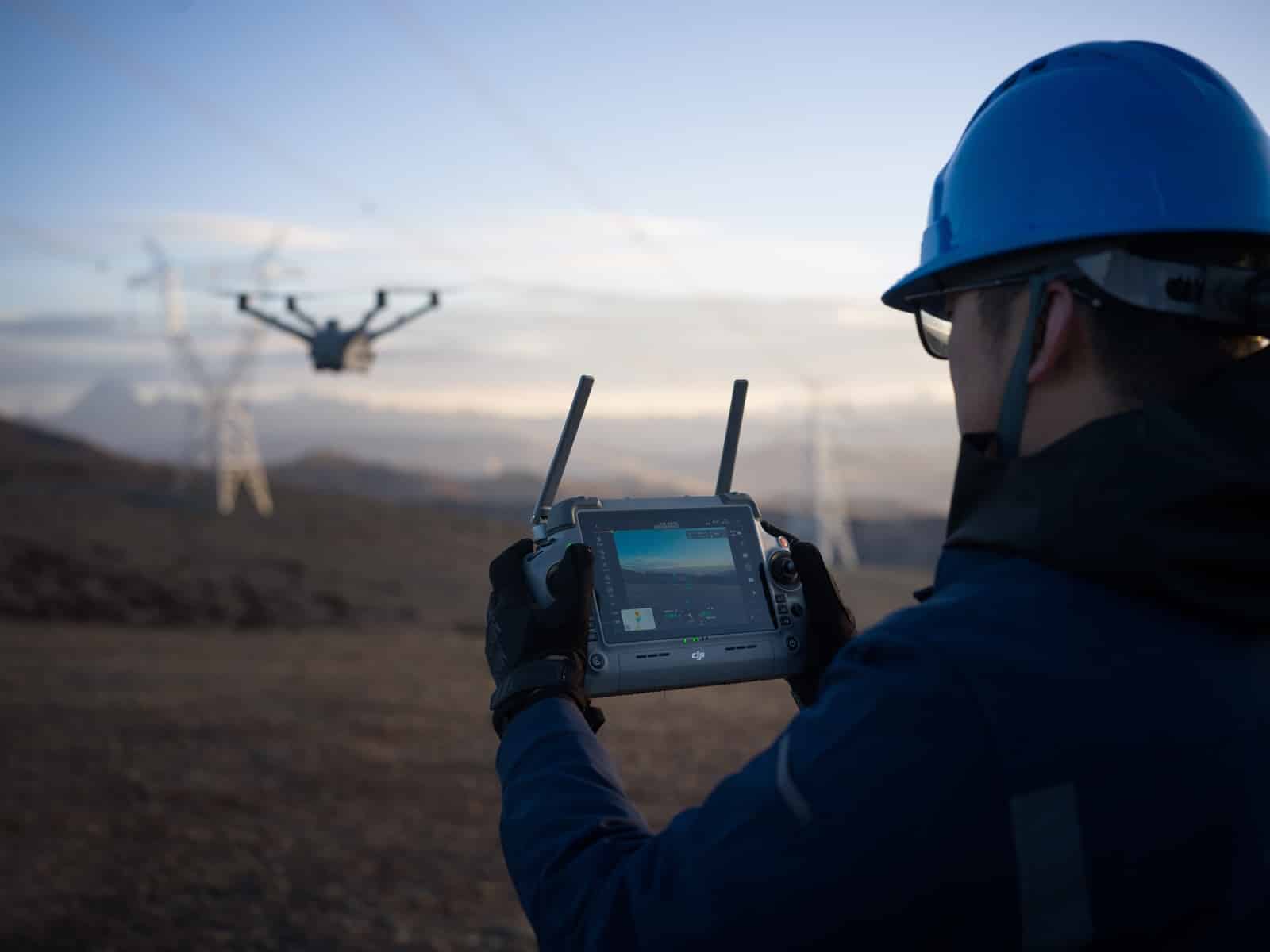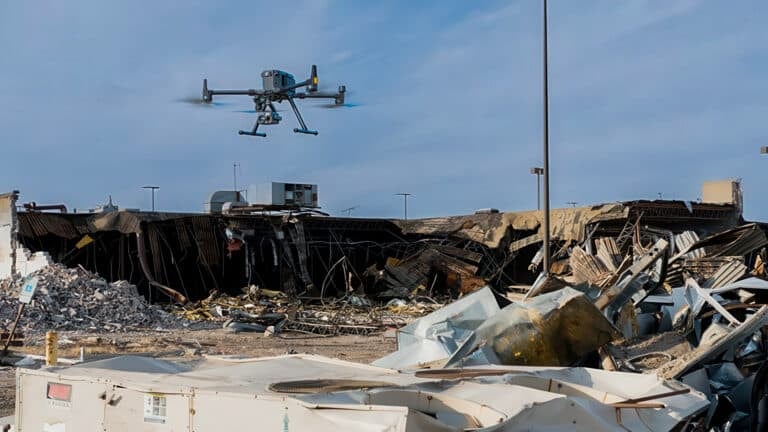Business Aviation Group Pushes FAA for Universal Electronic Conspicuity in Drone Regulation Fight

The National Business Aviation Association has thrown its weight behind a safety-first approach to the FAA’s proposed drone regulations, urging regulators to require electronic conspicuity for all aircraft rather than creating complex new right-of-way rules that could fragment the national airspace.
In comments submitted today to the Federal Aviation Administration and Transportation Security Administration, NBAA argued that universal position sharing across all aircraft would solve collision avoidance challenges more effectively than the FAA’s current proposal, which creates right-of-way scenarios based on whether aircraft broadcast ADS-B Out signals. The comments came on the final day of the 60-day public comment period for the FAA’s landmark Part 108 notice of proposed rulemaking.
Electronic Conspicuity as the Solution
NBAA is advocating for electronic conspicuity solutions that must be interoperable within the National Airspace System and among relevant user groups, considering both current and future technologies , according to Heidi Williams, NBAA vice president of air traffic services and infrastructure.
“Electronic conspicuity solutions must be interoperable within the NAS and among relevant user groups, and must consider current and future technologies,” Williams stated. “ADS-B is one, but not the only means, of achieving effective electronic conspicuity.”
The proposed Part 108 framework would allow certain low-altitude beyond visual line of sight (BVLOS) drone operations without waivers for package delivery, agriculture, surveying, public safety, and flight testing. However, the rule’s approach to separating drones from manned aircraft has sparked intense debate across the aviation community.
NBAA stated that universal position sharing through electronic conspicuity across all aircraft in the NAS would negate the need for complex changes to existing right-of-way regulations, since drones would simply detect and avoid all other aircraft .
Business Aviation’s Growing Drone Footprint
NBAA’s interest in the rulemaking stems from its members’ dual role in the airspace. Many NBAA members who have operated manned aircraft for decades are now adding unmanned aircraft systems to their mission planning, while some member companies use drones exclusively in furtherance of their businesses , Williams explained.
The association represents more than 10,000 company and professional members in the business aviation community, giving its technical recommendations significant weight with regulators.
Airworthiness and Security Concerns
Beyond electronic conspicuity, NBAA took aim at two other aspects of the proposed rule. The association advocated for retaining the existing criteria for making decisions (CMD) process for drone airworthiness certification.
“The current CMD process, a working method for airworthiness, has contributed to a very high level of safety and should not be discarded without justification,” NBAA stated in its comments.
On the security front, NBAA urged the TSA to withdraw its proposed security regulations from the larger rulemaking and undertake a separate risk-based rulemaking process . The TSA’s proposed changes would impose security threat assessments for certain persons engaged in BVLOS operations and require implementation of formal, TSA-approved security programs for certain types of operations, particularly package delivery.
Industry-Wide Implications
The FAA’s proposed Part 108 rule represents the most significant shift in drone regulations since Part 107 was established in 2016. The rule aims to move beyond the current waiver system that has limited BVLOS operations to case-by-case approvals.
However, the proposal has drawn fire from multiple angles. DJI warned the rule could ground most current drones due to country-of-origin restrictions, while the Pilot Institute coalition argued the FAA forgot about non-autonomous BVLOS operations that pilots are already conducting safely under waivers.
The right-of-way provisions have proven particularly contentious. Under the current proposal, drones would yield to manned aircraft broadcasting ADS-B Out, but manned aircraft without ADS-B might have to yield to drones—a reversal that’s sparked opposition from general aviation groups.
DroneXL’s Take
NBAA’s electronic conspicuity proposal sounds reasonable on the surface—make everyone visible, solve the collision avoidance problem. But let’s ask the uncomfortable question: who really bears the cost burden here, and why are drones once again being asked to accommodate a manned aviation system that’s been slow to modernize?
The business aviation community flies multi-million-dollar corporate jets. They can easily absorb the cost of electronic conspicuity devices. But what about the solo Part 107 pilot trying to build a real estate photography business? If “universal electronic conspicuity” means commercial drone operators need to buy another $1,000+ device on top of their existing equipment, that’s not a safety solution—it’s a barrier to entry that protects incumbent airspace users at the expense of innovation.
Here’s what NBAA conveniently doesn’t mention: drones already broadcast their position via Remote ID. Every compliant drone is already electronically conspicuous. The real visibility problem is that many manned aircraft—including business jets—still don’t broadcast ADS-B Out in all airspace. So the actual issue isn’t that drones are invisible; it’s that general aviation hasn’t fully modernized.
The solution being proposed essentially says “drones must detect and avoid aircraft that refuse to make themselves detectable.” That’s not equitable. If electronic conspicuity is truly necessary for safety, then manned aircraft should be required to equip first—they’re the ones operating in airspace that’s been exclusively theirs for a century. Drones are the new entrants following every rule thrown at them.
That said, NBAA gets one thing absolutely right: the TSA security requirements need to be separated from this rulemaking. Bundling complex security vetting with operational safety rules will delay BVLOS implementation for years and exclude legitimate commercial operators who pose zero security threat. The drone delivery companies and infrastructure inspection firms that have been waiting patiently for Part 108 shouldn’t be held hostage to security theater.
If the FAA moves forward with mandatory electronic conspicuity, it must be implemented fairly. That means fast-tracking approval of low-cost devices (under $500), making them available for all aircraft types, and potentially subsidizing them for small commercial operators. It also means requiring manned aircraft to equip on the same timeline as drones—no grandfathering, no exceptions.
The clock is ticking on Part 108. The FAA has thousands of comments to review, many of them contradictory. Commercial drone pilots have been professional, patient, and compliant. The final rule needs to reward that behavior, not punish it with more costs and delays.
Your Voice Matters—Comment Today
The comment period for Part 108 closes at 11:59 PM Eastern Time tonight (October 6, 2025). If you’re a commercial drone pilot, operator, or anyone who will be affected by these regulations, this is your last chance to make your voice heard.
Submit your comments directly to the FAA at Regulations.gov under Docket Number FAA-2025-1908. Tell the FAA how these rules will impact your business, your operations, and your ability to compete. Be specific. Be professional. But be heard.
The future of commercial drone operations in America is being decided right now. Don’t let it be shaped without you.
What do you think about NBAA’s electronic conspicuity proposal? Will you be submitting comments to the FAA? Share your thoughts in the comments below.
Discover more from DroneXL.co
Subscribe to get the latest posts sent to your email.
Check out our Classic Line of T-Shirts, Polos, Hoodies and more in our new store today!

MAKE YOUR VOICE HEARD
Proposed legislation threatens your ability to use drones for fun, work, and safety. The Drone Advocacy Alliance is fighting to ensure your voice is heard in these critical policy discussions.Join us and tell your elected officials to protect your right to fly.
Get your Part 107 Certificate
Pass the Part 107 test and take to the skies with the Pilot Institute. We have helped thousands of people become airplane and commercial drone pilots. Our courses are designed by industry experts to help you pass FAA tests and achieve your dreams.

Copyright © DroneXL.co 2025. All rights reserved. The content, images, and intellectual property on this website are protected by copyright law. Reproduction or distribution of any material without prior written permission from DroneXL.co is strictly prohibited. For permissions and inquiries, please contact us first. DroneXL.co is a proud partner of the Drone Advocacy Alliance. Be sure to check out DroneXL's sister site, EVXL.co, for all the latest news on electric vehicles.
FTC: DroneXL.co is an Amazon Associate and uses affiliate links that can generate income from qualifying purchases. We do not sell, share, rent out, or spam your email.



















‘The solution being proposed essentially says “drones must detect and avoid aircraft that refuse to make themselves detectable.” That’s not equitable.’
It’s also essentially impossible to do in all cases and it’s something all existing drone ops deal with all the time. It feels like the goal here is that small drones, especially recreational (in the the US) or sub-250g everywhere else are slowly being grounded.